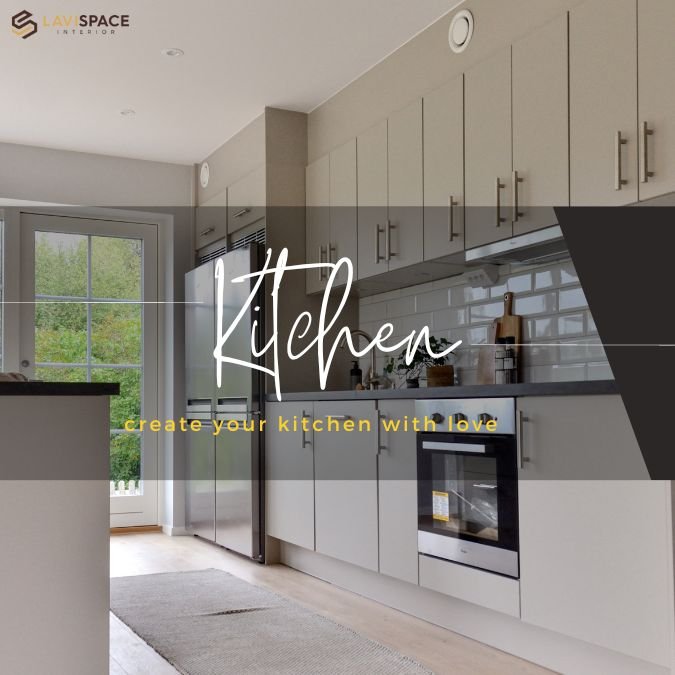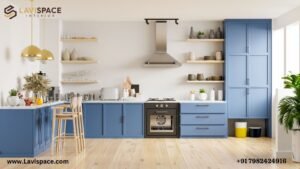When designing your kitchen, one of the most popular and efficient options is a modular kitchen interior. Modular kitchens offer a streamlined and organized approach to cooking spaces, combining functionality with aesthetic appeal. Whether you have a small apartment or a spacious home, incorporating modular design elements can transform your kitchen into a stylish and efficient area. In this article, we will explore some of the best tips and tricks to help you create a stunning kitchen interior that suits your needs and personal style.
Choosing the Right Modular Kitchen Interior Layout for Your Space

When designing a modular kitchen interior, selecting the right layout is crucial to maximizing functionality and efficiency. The layout determines how the different components of the kitchen, such as the stove, sink, refrigerator, and storage areas, are positioned concerning each other. Here are some popular kitchen layouts to consider when planning your kitchen interior:
L-Shaped Layout: An L-shaped layout is a versatile option for small and large kitchens. It features countertops and cabinets arranged in an L-shape, utilizing two adjacent walls. This layout provides ample counter space and a natural workflow between the cooking and preparation areas.
U-Shaped Layout: The U-shaped layout is ideal for larger kitchens with more space. It consists of countertops and cabinets along three walls, forming a U-shape. This layout offers abundant storage and counter space, allowing efficient multitasking and easy access to all kitchen zones.
Galley Layout: The galley layout is well-suited for narrow or smaller kitchens. It involves two parallel countertops and cabinets facing each other, creating a corridor-like setup. This layout optimizes efficiency by minimizing movement between work areas, making it ideal for one-cook kitchens.
Island Layout: The layout incorporates a central island or peninsula that serves as an additional workspace and often includes seating options. This layout works best in larger kitchens with ample space, providing extra countertop space, storage, and a gathering area.
Peninsula Layout: Similar to the island layout, the peninsula layout includes a connected countertop extension protruding from a wall or an existing cabinet. It offers additional workspace and can act as a room divider, creating an open-concept feel while maintaining separation from adjoining areas.
Open Plan Layout: The open plan layout integrates the kitchen seamlessly with the adjoining living or dining areas, creating a spacious and social environment. It often features an island or peninsula that transitions between the kitchen and the living space.
When choosing a kitchen layout, consider factors such as the size and shape of your kitchen, the number of cooks, your workflow preferences, and the overall aesthetic you wish to achieve. Additionally, ensure the layout allows for sufficient clearance and comfortable movement between different work areas.
Invest in Energy Efficient Appliances
When designing a modular kitchen interior, it is important to consider the energy efficiency of the appliances you choose. Investing in energy-efficient appliances not only helps reduce your environmental impact but also provides long-term cost savings. Look for ENERGY STAR-certified appliances, as they meet strict energy efficiency standards set by the Environmental Protection Agency (EPA). These appliances are designed to consume less energy without compromising on performance. Opt for energy-efficient refrigerators, dishwashers, ovens, and cooktops that use advanced technologies to minimize energy consumption. LED lighting fixtures are another energy-saving addition to consider for your modular kitchen. By choosing energy-efficient appliances, you can create a sustainable kitchen that saves energy and adds value to your home.
Prioritize Storage Solutions for Modular Kitchen Interior
Adequate storage is essential in any kitchen, and modular designs excel. Opt for smart storage solutions such as pull-out cabinets, corner units, and tall units with adjustable shelves. Utilize vertical space with overhead cabinets or open shelves for frequently used items. Drawer organizers and modular fittings like plate racks and cutlery trays can help keep your kitchen tidy and well-organized.
Conclusion:
By incorporating the best tips and tricks, you can create a stunning and functional kitchen that suits your needs and reflects your style. However, if you’re looking for expert assistance and a hassle-free experience, consider partnering with Lavispace for your modular kitchen design.
Lavispace is a leading provider of modular kitchen interiors and solutions, offering a wide range of customizable designs and high-quality materials. Their team of experienced designers can help you optimize your kitchen layout, maximize storage, and select the right materials and finishes for your desired aesthetic. With their expertise, you can transform your kitchen into a beautiful and efficient space that elevates your cooking experience.




